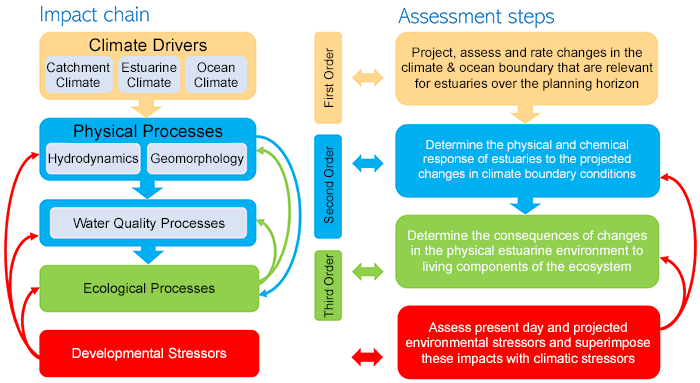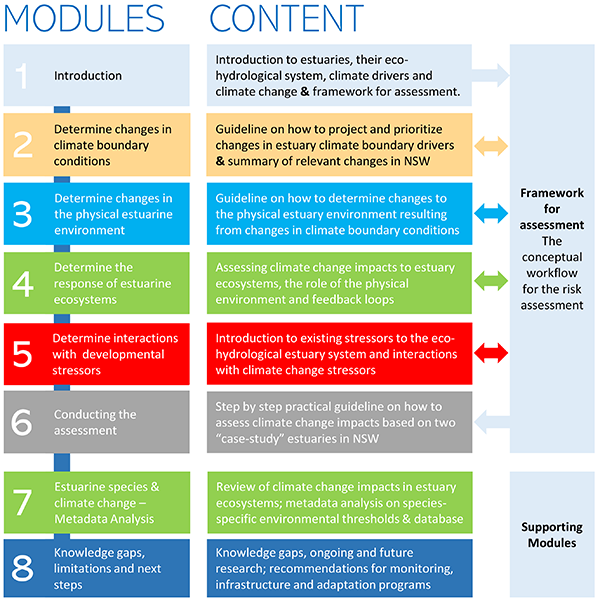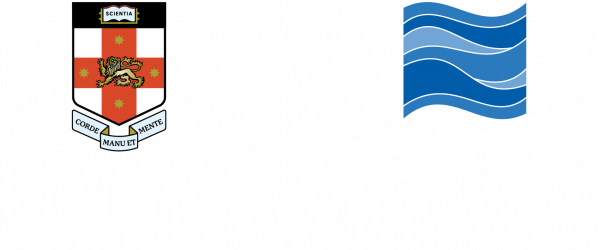Climate change in estuaries – State of the science and framework for assessment
Assessing the impacts of climate change in estuaries is a complex task. To help navigate this complexity, a multi-report guide has been designed for estuarine managers, scientists, practitioners and coastal communities.
In brief, the guide provides a summary of the relevant climate, ocean and ecosystem science along with best-practice frameworks for prioritising climate risks in estuaries. The guide consists of 8 module reports that cover different aspects of the risk assessment process and are designed to be read together or independently. The 8 modules are aligned (and colour coded) to guide the reader through the impact chains and assessment steps (as shown in the figure below) in a logical and easy to follow method. More information on each module is provided below and in the webpages above.

The figure above describes the first, second and third order effects in estuaries that drive water movements, water quality, ecological processes and stressors. Generally speaking, broad climatic variables or climate drivers, such as rainfall, temperature and sea levels (i.e. first order processes), drive hydrodynamics, geomorphology and water quality processes, which make up the physical estuarine environment (i.e. second order processes). Together with the ecological processes (i.e. third order processes), which includes all living organisms, the physical environment forms the estuary ecosystem. Developmental stressors can directly or indirectly influence both physical and ecological estuarine processes. The 8 modules of the guide are designed to follow this conceptual framework. A brief description of the modules (with links) and their content is provided below.

Module-1 provides a general introduction to assessing climate change in estuaries along with a roadmap for the remaining modules.
The risk assessment process then includes four major components that correspond to:
Module-2 – Changes in the climate system;
Module-3 – Changes in the physical estuarine environment;
Module-4 – Changes to the ecology; and,
Module-5 – Existing stressors and interactions.
Module-6 illustrates how the framework for assessment, as presented in Module 1 – 5, has been applied at two estuaries in New South Wales as a case study (via a published journal paper).
Module-7 provides a database of ecological metadata available for NSW estuarine species along with a summary of the underlying science used in the database. This database includes eco-thresholds for all previously studied species and is freely available online.
Module-8 is a summary of key knowledge and data gaps along with suggestions for immediate and future research needs. Note that this document is currently not available.
Note that all scientific reports have been peer reviewed following standard scientific practices.

